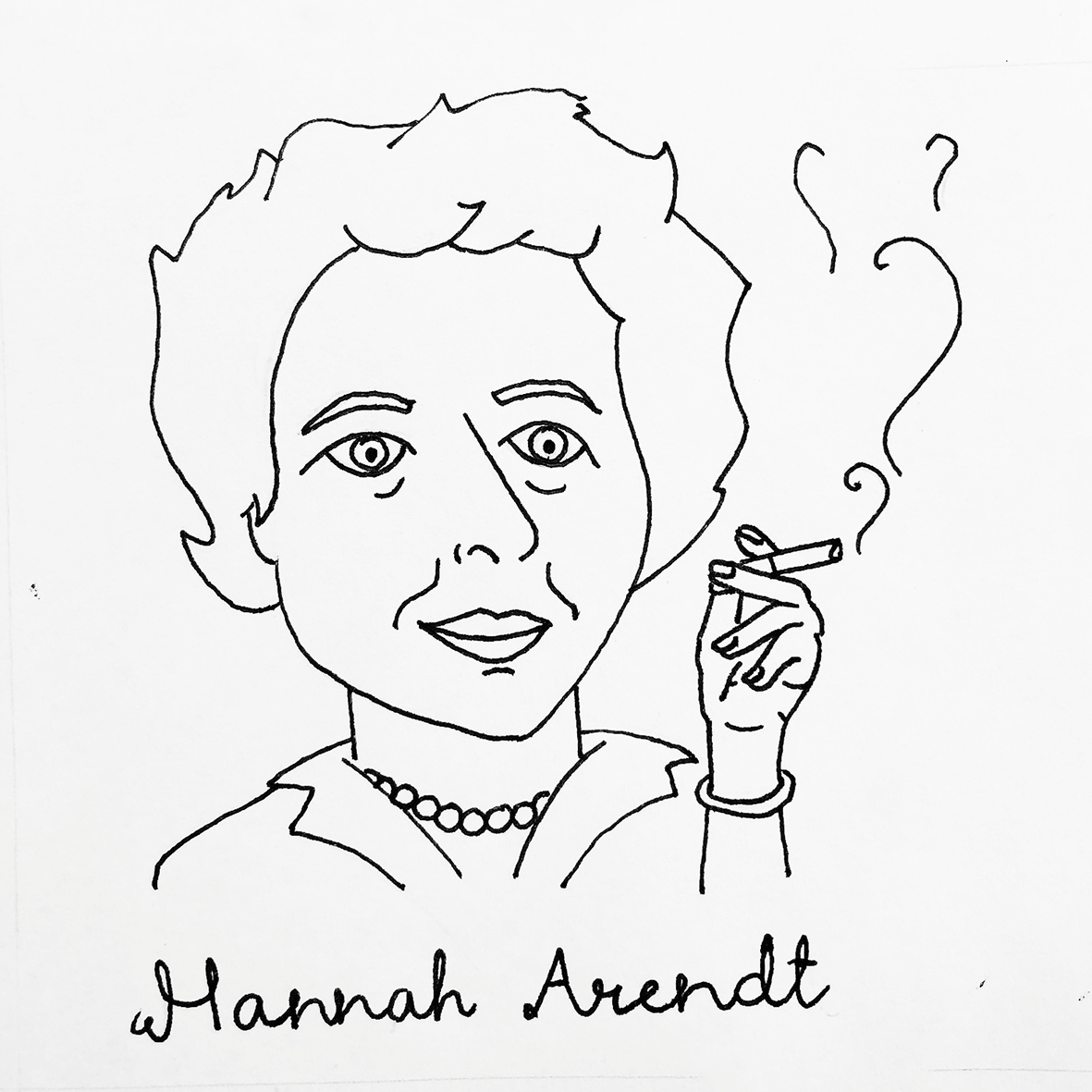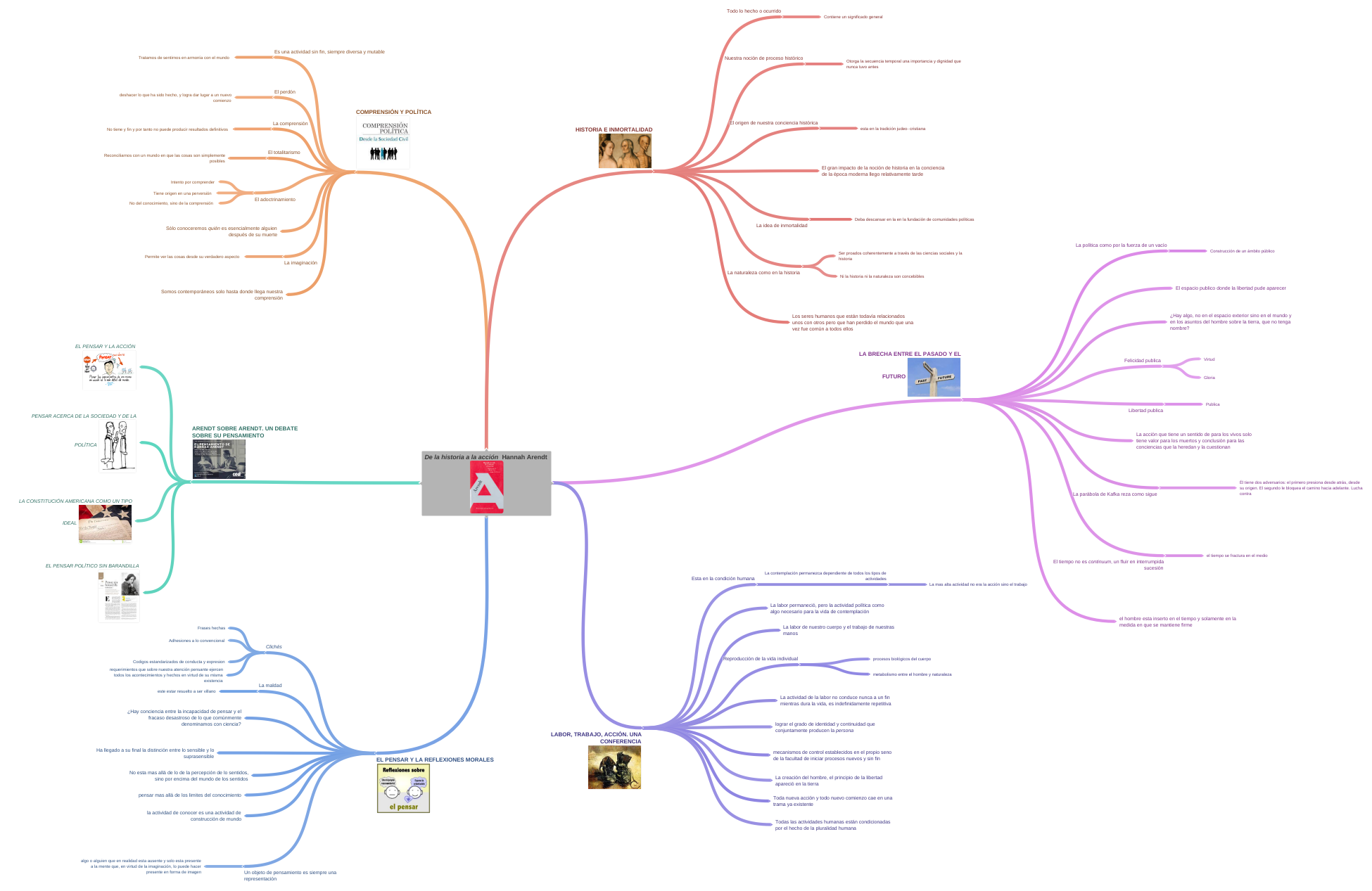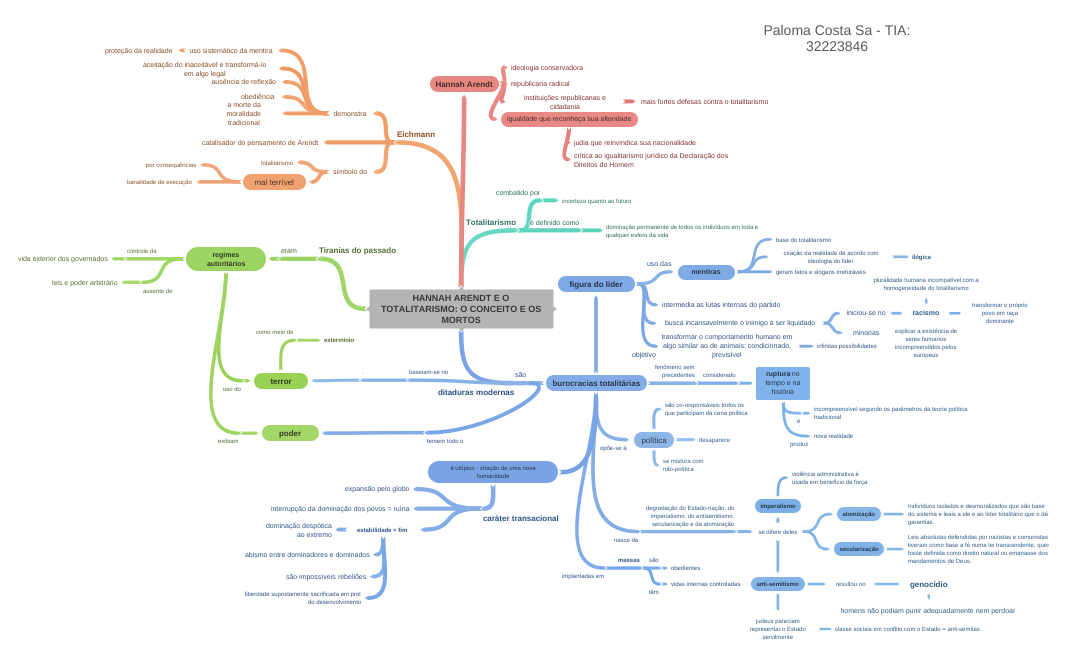
DFB12042020 Mapa Mental Tradição no Pensamento de Hannah Arendt
Desvende os segredos de 'Hannah Arendt' com a ajuda de nossos mapas mentais, projetados para fácil compreensão.. Os créditos do autor, na maioria das vezes, estarão na própria imagem do mapa mental, em outras situações o autor será considerado desconhecido.Se algum dos mapas mentais for de sua propriedade exclusiva, e por.

Mapa Autonomía de Lo Político PDF Hannah Arendt Filosofía
The original inspiration of Hannah Arendt's last work, The Life of the Mind, was the question of whether human thinking could help us resist evil. Arendt concluded that its answer was positive: thinking was a shield against evil. But, subverting this claim, her magnum opus, The Origins of Totalitarianism, showed that thinking could not have served as a moral safeguard in the history of Nazism.

1 de abril Hannah Arendt
Hannah Arendt by Fred Stein, 1944 (Photograph courtesy of the Fred Stein Archive). of all mental activities: it manifests itself as the only reality of which thinking qua thinking is aware, when the thinking ego has withdrawn from the world of appearances and lost the sense of realness inherent in the sensus communis by which we orient.

La banalización del mal Hannah Arendt Parte II YouTube
Hannah Arendt is widely regarded as a political theorist who sought to rescue politics from 'society', and political theory from the social sciences. This conventional view has had the effect of distracting attention from many of Arendt's most important insights concerning the constitution of 'society' and the significance of the.

etica Mapas conceptuales Hannah Arendt
This paper offers an interpretation of René Girard's mimetic theory in light of Hannah Arendt's account of St Augustine's philosophy of love. Girard's mimetic theory crosses many disciplines and has been the main inspiration in his oeuvre over decades. However, its later application and how it purports to demystify culture and point to the truth of the Christian revelation, sits.

De la historia a la acción Hannah Arendt image Coggle Diagram
Hannah Arendt fue una pensadora que criticó duramente la filosofía de Sócrates, Platón, Aristóteles, Immanuel Kant, Martin Heidegger y Karl Jaspers, incluso de teóricos políticos como Maquiavelo y Montesquieu, pero en la actualidad, su pensamiento no pasa desapercibido en ningún debate filosófico.. Sin lugar a dudas, Hanna Arendt fue una persona muy especial, diferente y su teoría.

MAPA MENTAL SOBRE HANNAH ARENDT STUDY MAPS
5. Helenismo / Hannah Arendt: O que resta é a líng. Mapa Mental - Tradição no Pensamento de Hannah Arendt. 6. Epicurismo / Franz Kafka: uma reavaliação/ Auto. 7. Alexandre, o Grande / O que é política para Han. 8. Associação diferencial e crime do colarinho bra. 9. Etiquetamento e Criminologia crítica . 10.

Johanna Arendt "Hannah Arendt"
Arendt considers the crucial role of time — that astoundingly elastic concept — and memory — that centerpiece of human creativity — in understanding free will from the perspective of the thinking ego: Memory, the mind's power of having present what is irrevocably past and thus absent from the senses, has always been the most plausible.

Hannah Arendt banalidad del mal y condición humana Explicación YouTube
Hannah Arendt: On Power. The work of Hannah Arendt, especially her most seminal work, The Human Condition (1958b), is usually interpreted and critiqued in terms of her con cept of action. While the centrality of this notion is unquestionable, its rela. tionship to her radical redefinition of power is generally given rather short.

HANNAH ARENDT E O TOTALITARISMO O CONCEITO E OS MORTOS, é utópico
Hannah Arendt (/ ˈ ɛər ə n t, ˈ ɑːr-/, US also / ə ˈ r ɛ n t /, German: [ˌhana ˈaːʁənt] ⓘ; born Johanna Arendt; 14 October 1906 - 4 December 1975) was an American historian and philosopher.She was one of the most influential political theorists of the 20th century.. Her works cover a broad range of topics, but she is best known for those dealing with the nature of power and.

MAPA MENTAL SOBRE HANNAH ARENDT STUDY MAPS
When Hannah Arendt died in December 1975, she was known primarily because of the controversy about her report of the trial of Adolf Eichmann and the phrase "the banality of evil". A small circle of admirers and critics in the United States and Germany were knowledgeable about her other works, but she was scarcely considered to be a major.

MAPA MENTAL SOBRE HANNAH ARENDT STUDY MAPS
The Life of the Mind, Hannah Arendt Volume 1 of Thinking, Hannah Arendt Works of Lionel Trilling: Author: Hannah Arendt: Publisher: Harcourt Brace Jovanovich, 1978: ISBN: 0151518955, 9780151518951: Length: 258 pages : Export Citation: BiBTeX EndNote RefMan

Mapa mental Citações Hannah Arendt, Third Grade Science, Physics
Hannah Arendt (born October 14, 1906, Hannover, Germany—died December 4, 1975, New York, New York, U.S.) German-born American political scientist and philosopher known for her critical writing on Jewish affairs and her study of totalitarianism.. Arendt grew up in Hannover, Germany, and in Königsberg, Prussia (now Kaliningrad, Russia).Beginning in 1924 she studied philosophy at the.

La banalización del mal Hannah Arendt Parte I YouTube
Hannah Arendt's work is of major importance primarily because of the categories of thought she originates, especially her concept of political action.. mental. And that is why for Arendt politics requires the elevation of principle over purpose. To make purposes-even public purposes-primary, as Thompson does, is to lose the

¿Qué es la política? Hannah Arendt Mind Map
filosofia. hanna arent. Mind Map by Sonia Le Girelld, updated more than 1 year ago. Created by Sonia Le Girelld over 7 years ago. 118.

“Hannah ArendtMap”, 2003 Thomas Hirschhorn with Marcus Steinweg, 230 x
In light of this, Hannah Arendt's claim that the emotions are apolitical has come under renewed fire. But many critics have misunderstood her views on the relationship between individuals, emotions and the political. This paper addresses this issue by reconstructing the conceptual framework through which Arendt understands the emotions.